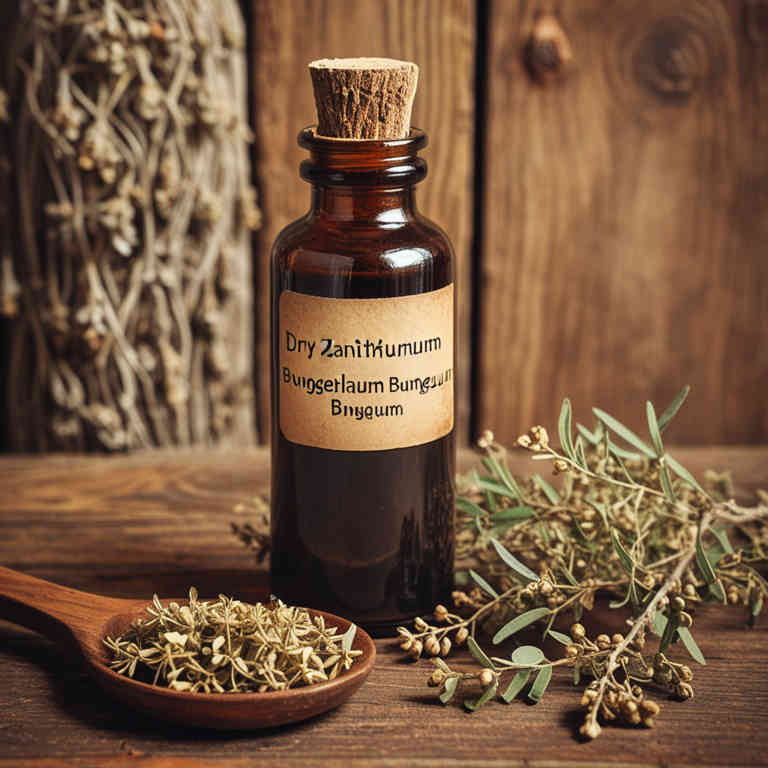Zanthoxylum bungeanum tincture for medicinal use

Zanthoxylum bungeanum tincture is a concentrated herbal preparation made from the dried fruits of the prickly ash plant, which is native to East Asia.
It is commonly used in traditional Chinese medicine for its purported ability to aid digestion, relieve pain, and reduce inflammation. The tincture is often taken in small doses to support gastrointestinal health and may be used externally for skin conditions. It is valued for its stimulating and warming properties, making it a popular remedy in herbal practices.
However, due to its potency, it should be used with caution and under the guidance of a qualified herbalist.
Uses
Zanthoxylum bungeanum tincture has been used to treat various ailments in traditional Chinese medicine for centuries, primarily for its analgesic, anti-inflammatory, and antiseptic properties.
Historically, it was employed to relieve pain, reduce swelling, and promote wound healing, often applied topically or ingested in small doses. In modern times, the tincture is still valued for its potential therapeutic benefits, with some studies suggesting it may aid in managing conditions like arthritis and digestive issues. It is also used in aromatherapy and as a natural remedy for colds and respiratory infections.
Due to its potency, it is typically used under the guidance of a qualified herbalist or healthcare professional.
Benefits
Zanthoxylum bungeanum tincture has health benefits such as improving digestion, reducing inflammation, and supporting immune function.
It is traditionally used in Chinese medicine to treat conditions like indigestion, muscle pain, and skin irritations. The tincture contains compounds like alkaloids and flavonoids, which contribute to its therapeutic properties. It may also help in alleviating symptoms of colds and respiratory infections due to its antimicrobial and antiviral effects.
Regular use of this tincture is believed to promote overall wellness and enhance the body's natural defenses.
Constituents
Zanthoxylum bungeanum tincture active constituents include alkaloids, flavonoids, and essential oils, which contribute to its medicinal properties.
These compounds are known for their antimicrobial, anti-inflammatory, and analgesic effects. The alkaloids, such as sanguinarine and chelerythrine, are particularly noted for their ability to reduce pain and combat infections. Flavonoids in the tincture help in reducing oxidative stress and supporting immune function.
Essential oils provide additional antimicrobial benefits and may aid in respiratory and digestive health.
Preparation
To make Zanthoxylum bungeanum tincture, begin by gathering fresh or dried berries of the plant, ensuring they are free from pesticides.
Next, place the berries in a clean glass jar and cover them completely with high-proof alcohol, such as vodka or grain alcohol. Seal the jar and let it sit in a dark, cool place for four to six weeks, shaking it occasionally to ensure even extraction. After the steeping period, strain the liquid through a fine mesh or cheesecloth to remove the plant material.
Finally, store the tincture in a dark glass bottle in a cool, dry place, where it will remain potent for several months.
Side Effects
Zanthoxylum bungeanum tincture may lead to gastrointestinal discomfort, including nausea, vomiting, and diarrhea, due to its high concentration of bioactive compounds.
It can also cause allergic reactions in individuals sensitive to the plant's components, such as skin rashes or respiratory symptoms. Prolonged use may result in liver toxicity, as some studies suggest potential hepatotoxic effects from long-term consumption. Additionally, it may interact with certain medications, particularly those affecting the central nervous system or blood pressure.
It is important to consult a healthcare professional before using this preparation, especially for individuals with pre-existing medical conditions.